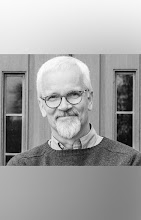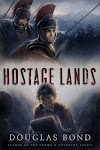INKBLOTS – July 25, 2011
Gray summer evening, after a day of rain (it’s Western Washington), John opened an 11-year-old chardonnay from France. Two new fellows joined us tonight, Graham writes for livestrong.com, so joins us as a paid writer. Andrew interested in writing both fiction and technical writing (he’s a software engineer).
We talked about Bonhoeffer’s theology for a bit and Metaxas’s biography of him. Then John leads off with a quick (I’m hoping :-) summary of his contemporary fiction. Reads new chapter on Andy, the cop, breaking up a small-town hardware store break-in. Cop sets up high school son to help with the case; he thinks it might be kids, based on the kinds of things stolen, sporting goods, gps, walkie-talkies. John is shifting into the head of another character, the son, now wondering what it would be like to get shot, if it was discovered that he was helping the police with this case. I feel like there’s a disconnect because of this point of view shift. In my opinion, your story will be stronger if you let the story unfold from the dominant character, the protagonist’s view of the world. We talked about the importance of sticking with a dominant point of view, how much we gain from staying riveted on Andy’s character and what he thinks about his son and what makes his son tick, instead of entering into his son’s head. We actually don’t gain from doing that, in my opinion, we lose the opportunity to go deeper on Andy the father’s character. And make sure you give us more sensory description of people and place, body language, unique qualities, quirks of person and of place. Develop the uniqueness of the old-school hardware store, Lincoln Hardware, or the old Tillicum Hardware store that looms large in my memory from my childhood—where I stole an eyebolt when I was six, and my father made me take it back—life changing experience. Graham noticed that the girl was 5’6” in one place and 5’8” in another. Oops. How authentic is it for the father to end his words with “son”? Good point from Andrew.
Graham shares with us about his non-fiction writing for Live Strong. He gets edited and some times he finds that frustrating. He does 6-8 per day at about 500 words per article. Over 700 published articles! Two technical writers in one night. Good for us. Then we talked about submarines and rescues robotics—how did we get there? Interesting though.
Dougie reads from his latest historical fiction: WW II, Texas Division, Italian Campaign in 1943, the Gustav Line, Monte Cassino. Theme of the unity of Christians from diverse denomination and ethnic backgrounds. So he brings together many nationalities together in this campaign to recover a rare relic, work together to do this, even when not Roman Catholics. Allies landed on Sept 9 at Salerno, near Vesuvius and Pompey. Germans have withdrawn. Main character is John Owen, and historical characters he’s trying to work in, written about by Ernie Pile, killed by Japanese sniper on Okanawa. Immediately D gives us tactile experiential material. There is verve and authenticity to D’s writing—I’m there within a few lines as he reads, no kidding. “Increases with the coming hot day,” is problematic chronologically; your protagonist is thinking in present tense, but here is projecting forward. Does that work? Good critique of differences in prayer life, deficiencies of lacking immediacy in praying, preferring scripted praying, which doesn’t work as well in the immediate, does it. “A variety of animals”—always better to be specific.




























Sounds like a good time, Doug. The idea of having someone else read your work out loud would be interesting. I tend to be the one to read my own work to my family, but then, I'm also taking notes right in the text as they suggest changes. Hmmm... maybe if I printed it out for someone to read.
ReplyDelete